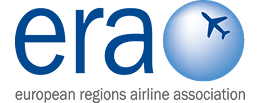At the last ERA Safety Group meeting held in Lisbon in April, members were informed that EASA was conducting a Best Intervention Strategy (BIS) titled Safe Operations in a PBN Environment.
ERA raised the risks associated with GNSS interference through both its Operations and Safety Groups, with members voicing concerns about the impacts on the resilience of PBN environments, and earlier this year, ERA submitted a formal response to the EUROCONTROL Navigation Sub-Group (NSG) and ICAO, emphasising the importance of maintaining Instrument Landing System (ILS) CAT I availability beyond the 6 June 2030 sunset date outlined in the PBN-IR.
GPS signal loss incidents increased by 220 per cent between 2021 and 2024, particularly affecting flights operating near conflict zones, something that was also highlighted during the recent EASA/IATA workshop where a joint action plan was presented.
We are therefore pleased to note that EASA’s BIS has acknowledged the operational impact of restricting access to conventional navigation procedures, ongoing ILS CAT I availability, and the growing need to strengthen contingency capabilities.
In response to these concerns and based on the BIS recommendations, EASA will now initiate a rule making task (RMT) to address the operational and safety challenges arising from limitations on conventional navigation aids and the vulnerability of GNSS-based operations to interference or outages.
The scope, structure, timelines, and deliverables of this rulemaking task will be reviewed and validated through consultation with EASA Advisory Bodies as part of the EPAS 2026 update cycle.
The topic will be discussed in detail during the upcoming ERA Operations and Safety Group meetings, scheduled to take place at EASA’s headquarters in Cologne on 2–3 December.
